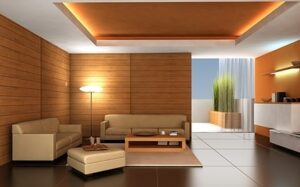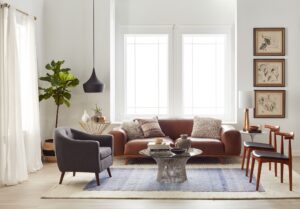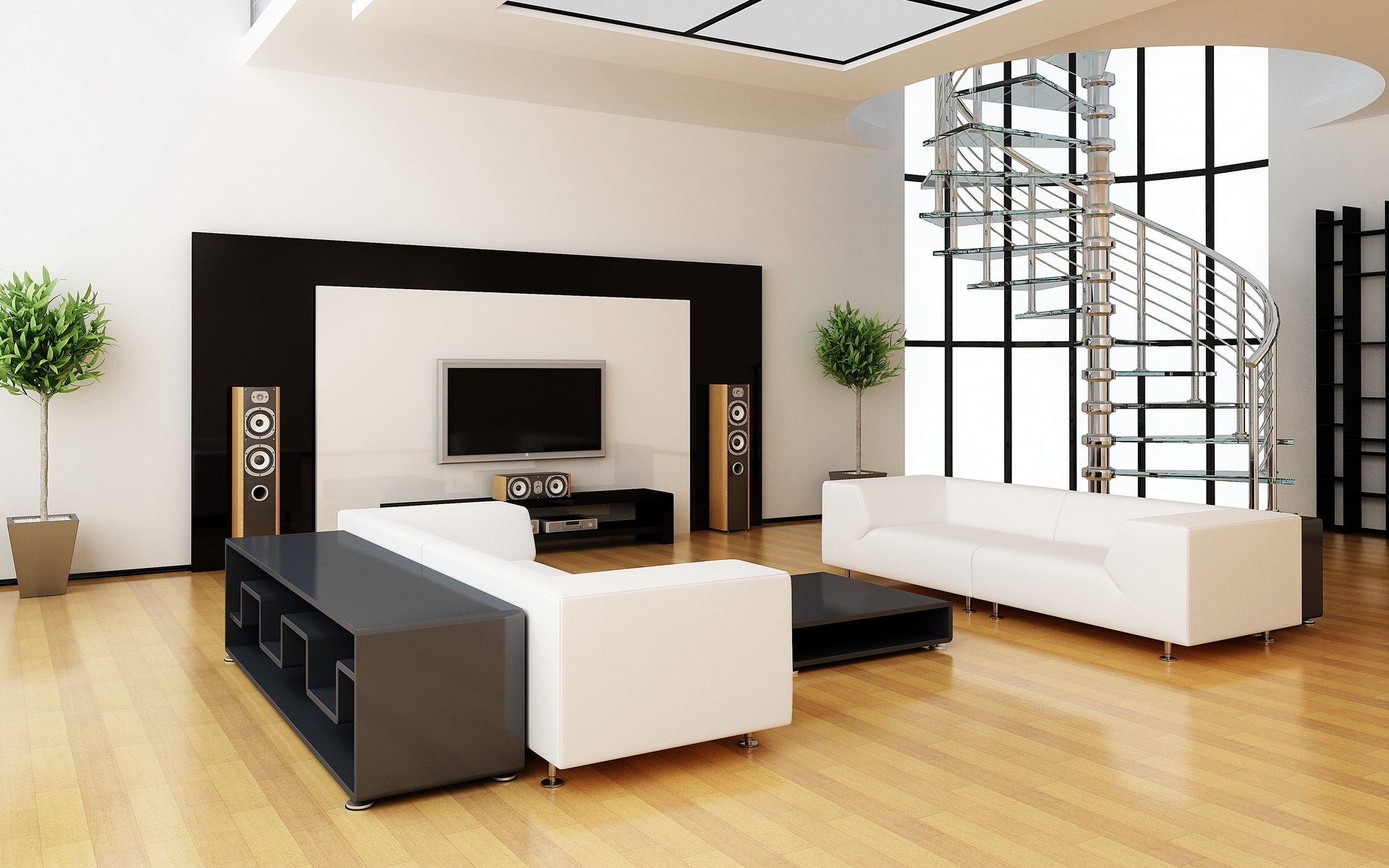
It often takes a talented eye to bring out the very best in a building. Whether it’s a new building or a renovation, an interior designer can help to transform a space to be functional, beautiful, and just what the building’s owner is looking for. Becoming an interior designer and starting an interior design business requires lots of work, including formal education, but it can also bring the opportunity to transform and improve countless spaces and countless lives at the same time.
Business Overview
Interior designers work with clients to improve both the aesthetics and the functionality of a space, whether that’s a single room or the entire interior of a new business. Designers follow a complex process that starts with analyzing a space and performing research. Good designers need to combine both attention to detail and creativity in their work, planning, revising, and then executing designs to meet their clients’ desires.
Because of the intricate knowledge required in this field, designers tend to specialize in a particular niche, like residential interior design or commercial healthcare facility design. They often work closely with architects and general contractors and will focus on everything from the overall layout of a room, to the color palette, to the fabrics, to the placement of furnishings.
Industry Summary
According to IBIS World, the interior design industry underwent steady growth from 2015 to 2019. During that time, the industry experienced 1.6 percent annual growth, and the number of businesses increased to 110,280. Correspondingly, industry employment also grew to 140,828. In 2019 alone, the industry brought in $16 billion in revenue.
This steady growth was largely driven by an increase in residential and commercial construction projects driven by the improved economy. The per-capita disposable income also increased during that time, meaning people were more likely to spend money on luxuries like interior design.
Industry Trends
Many trends are currently affecting the interior design industry and shaping what that industry may look like in the coming years. According to Interiors+Sources, one of the largest trends currently shaping the industry is an increased focus on the environmental and social aspects of design projects. Consumers are considering the sustainability not only of their design projects but also of the design businesses that they decide to hire. Design businesses that can demonstrate their sustainable designs may win jobs over other businesses lacking that sustainability experience.
With loneliness being a major issue in society today, interior designers have the opportunity to use design to combat that issue. This is particularly true in commercial interior design, where designers can create inviting spaces that allow for maximum social interaction.
Architectural Digest predicts that interior design will become increasingly digital, with designers relying on visualization apps, online purchasing tools, and online communication tools. Increasingly, designers will be able to facilitate virtual designs, which means they could potentially have clients anywhere. Social media has already become a powerful marketing tool for interior designers. The trend will likely continue, serving as a major platform that becomes more refined and business-focused for designers.
Target Market
The ideal clients for an interior design business are generally real estate owners, though that target audience will become more refined based on a business’s specialty. Some businesses focus on high-end design for affluent homeowners, while others may offer commercial interior design services for larger businesses like hotels, senior living facilities, and restaurants.
Skills, experience, and education useful in running an interior design business
Starting an interior design business doesn’t require a business degree, but certain skills and experiences can make the process of starting this business smoother and potentially more successful.
Design experience and education. According to Career Explorer, a bachelor’s degree is required to become an interior designer. Interior designers’ education usually includes courses in topics like project management, drafting, design, space planning, and 3-D imaging. Several states require interior designers to earn an interior design license, and this formal training may be a requirement, depending on the state’s laws. In contrast, there is no formal education required to become an interior decorator.

Attention to detail. Attention to detail is a paramount skill for interior designers. A good designer will focus not only on the big picture but also on how all of the little detail elements contribute to a room’s overall aesthetic and functionality.
Knowledge of building codes. A knowledge of local building codes is a must, especially when a designer is involved in making alterations to a room’s physical layout. Designers need to have a working knowledge of plumbing codes, electricity, and architecture basics like how load-bearing walls work.
Problem solving skills. Problems are sure to arise in any design job, so designers need to be creative and come up with solutions to any problems they may encounter. Some of these problems may occur with pressing deadlines, so the ability to think creatively even when under pressure is also important.
Customer-service skills. Interior designers work closely with their clients, and listening to and addressing customer concerns is important.
Costs to Start an Interior Design Business
Starting an interior design industry carries relatively minimal startup costs. Plan to spend at least $3,000 on some of the essentials, like a professionally designed website with a comprehensive portfolio section to display your work. Since designers don’t truly need a physical office space, they can save on rent costs.
Common startup costs for an interior design business include:
- Website development
- Contracts (usually developed by or purchased from a lawyer)
- Design software
- Business vehicle, like an SUV, if a personal vehicle isn’t already available
- Supplies for each job (These are typically financed out of a down payment the client makes)
Steps to Starting an Interior Design Business
Step 1: Write the Business Plan
After coming up with the idea, the next step in starting your business should be to write a business plan. Not only will a bank require you to have a business plan, but multiple studies have shown that a business plan helps increase the odds of starting a successful business.
Step 2: Form a Business Entity
A business entity refers to how a business is legally organized to operate. There are four primary business entities to choose from, which include the sole proprietorship, partnership, corporation, and Limited Liability Company (LLC). Each type of entity has its own pros and cons, such as liability exposure, costs, and administrative requirements.
Step 3: Name the Business
Finding the perfect business name can be challenging. Not only does the name have to resonate with your customers, but it also has to be available to use.
Related: Tips and ideas for naming an interior design business
Step 4: Select your Location
A smaller interior design business doesn’t necessarily need an office that’s open to the public and can be operated out of a spare room or office in the owner’s home. As a business grows, renting office space may help, especially if the business hires staff.
Step 5: Register for Business Licenses and Permits
Many states require interior designers to obtain licensing. In states that make licensing or registration optional, an interior designer may want to become licensed. Rather than send designs to licensed architects to finalize work, some states allow designers to sign off and submit drawings, which provides additional value to their services. Even in states where licensing isn’t necessary, certification can increase billable rates by 34%.
In addition, there are some general licensing and registrations that will vary depending on where the business is located, such as a sales tax permit or Employer Identification Number. Let SamBoad Business Group Limited assist you with that if you in Ghana
Step 6: Find Financing
Coming up with a good business idea and having the skills to run it are one thing, but getting the funding to start an interior design business is another. Even though the cost to start an interior design business is relatively small, getting funding can be difficult. In order to get a loan, the borrower(s) will need to have good credit and personally invest 15-25% towards the total start-up costs.
Step 7: Open a Business Bank Account
Keeping your business and personal finances in separate business bank and credit card accounts makes it easier to track the business’s income and expenses. Talk to SamBoad Business Group LLC
Step 8: Get your Marketing Plan in Place
Marketing is essential in both establishing and running an interior design business. Business owners often use social media such as Facebook, Instagram and Linkedin as well as paid online marketing on Google and An, but there’s also potential for print advertising and direct mail marketing opportunities. Some designers also establish referral rewards programs, encouraging current and past clients to recommend the business to other potential clients. Marketing costs will vary depending on the type of activity. Talk to SamBoad Media Consult for all your social media marketing
Step 9: Get Business Insurance
An interior design business will need several different types of insurance for full coverage:
- General liability insurance protects the business if customers are ever injured, like tripping over equipment on a job site. This insurance can cover costs like legal fees and other expenses.
- Commercial property insurance protects the business against the financial loss of inventory and property after an event, like a fire.
- Commercial auto insurance protects the business in case a business vehicle is ever involved in a car accident.
- Workman’s comp insurance helps to cover expenses like medical bills or lost wages if an employee is ever hurt while on the job.
To get an accurate idea of what insurance will cost, request quotes from multiple providers. Compare the quotes, and be sure to pay attention to variables like coverage limits and exclusions, premiums, and deductibles.
Step 10: Hire Employees
Newer interior design businesses won’t require employees. As a business grows, it may be useful to bring on a personal assistant or assistant designer. Salary.com reports that interior design assistants earn an average salary of $40,613. According to Avaani Designs and Interior, personal assistants earn an average of $43,239 per year.
In addition to budgeting for salary expenses, the payroll budget also needs to include , paid time off, and health insurance contributions for employees.
Step 11: Set up an Accounting System
Setting up an accounting system is critical to the long-term success of your business.
Staying on top of taxes not only keeps the business out of trouble with the government, but the numbers can be used to track and monitor trends and cash flow in the business and maximize profits.
How much can you potentially make owning an interior design business?
Salary.com reports that, as of December 2019, interior designers earned an average of $46,385 per year. Designer salaries typically ranged between $36,784 and $50,870.Many factors will affect a designer’s earning potential, including the certifications they hold, their specific skills, how many years they’ve worked in the industry, the type of clients they market to, and even their location.
Things to consider before starting an interior design business
When starting your own interior design business, a portfolio is often going to be the difference between getting clients and losing out on jobs. If you’ve previously completed interior design projects for other agencies, you may already have design samples that you can use, but make sure that you have permission to use the samples of the work you did under that agency.
If you have limited or no samples, you’ll need to create them before striking out on your own. Volunteering your services or doing interior design in your own home can help create these samples quickly. Don’t underestimate the importance of quality photographs of the spaces. If you or a friend aren’t talented with a camera, it’s worth hiring a professional photographer who can take quality photos that display your work in its best light.




